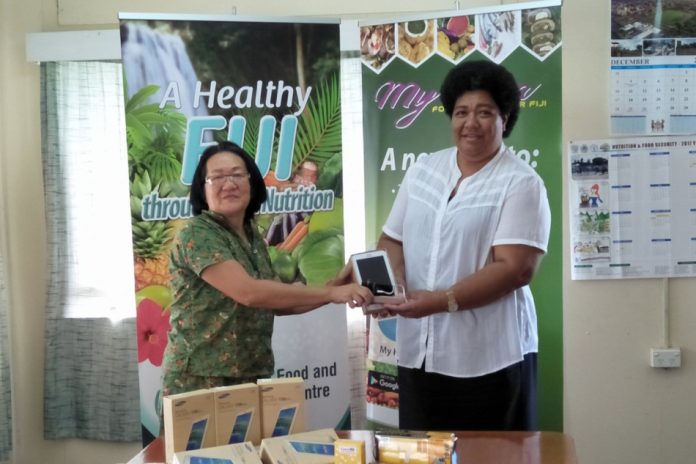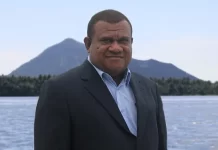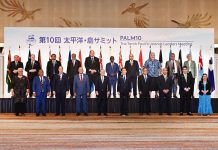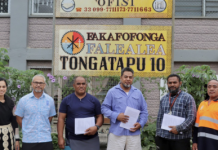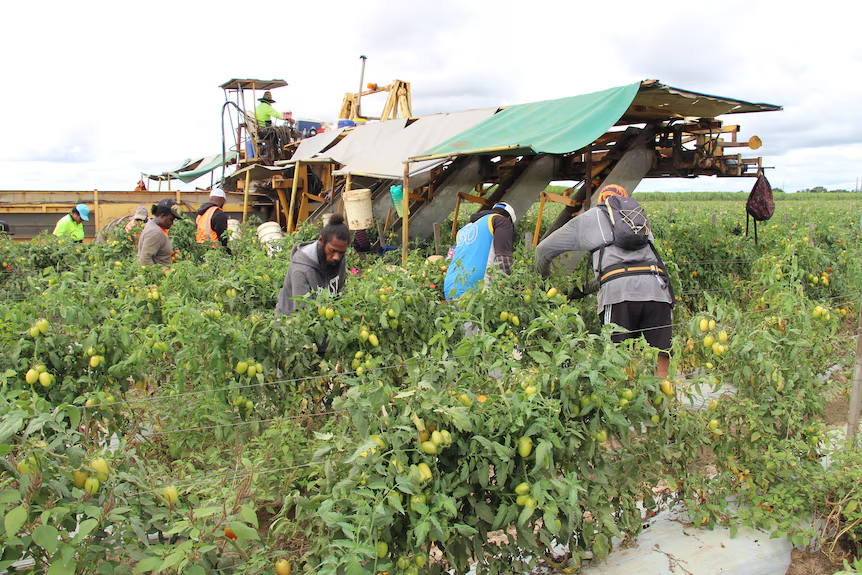Innovation in Small Island Developing States combines digital savvy with traditional approaches
Irene Chief’s words are stark as she describes what spurred her and her colleague Kama Ateca to do something about unhealthy diets in their island nation of Fiji. Seeing co-workers in their thirties or forties dying of heart attacks “will leave you traumatised,” she says. “We go to more and more funerals of young people… when people leave families at 30 or 40, we really need to look at our diet.”
This deep-seated concern at the impact of diet-related Non-Communicable Diseases (NCDs) led Irene, who works at the University of the South Pacific, and Ateca, who is a senior official at Fiji’s Health Ministry, to begin collaborating on the My Kana smartphone app. It helps Fijians both monitor what they’re eating and gives them guidance on planting vegetable gardens.
My Kana (meaning “food” in Fiji’s indigenous iTaukei language) was one of the innovations showcased at the Small Island Development States (SIDS) Solutions Forum, co-organised by FAO and the government of Fiji in August 2021.
The challenges the app is designed to address are far from unique to Fiji. In fact, many countries around the world, and many SIDS in particular, face a “triple burden of malnutrition” — underweight, overweight and obesity accompanied by micronutrient deficiencies.
Modern lifestyles are changing Fijians’ traditional dietary patterns from local root crops to a more cereal-dense diet and from eating local vegetables and fruits to consuming too much fatty, sugary or salty, often imported, processed foods.
The transformation is particularly pronounced among Fijians living in urban areas, whose diet and lifestyles have changed radically from those of their parents’ or grandparents’ generation.
“Our population is also consuming a lot more kilocalories, and with insufficient physical activity, that is contributing to NCDs,” Ateca says. According to Fiji’s Health Ministry, NCDs are responsible for around 80 percent of the deaths in the country and the numbers are growing.
So just how significant is this innovation, which sits on thousands of Fijians’ smartphones?
Irene says, “You have to remember that Fiji has 300 islands so how do you have people access information?”
Different from the laid-back, idyllic image of the South Pacific presented in novels or tourist brochures, island living presents many challenges, according to Irene. Boat journeys between islands are time-consuming and air trips expensive, “but we’re a very fast-changing society,” offers Irene.
With increasing deregulation of the internet, “we’re able to use mobile phones and that’s why we developed the app. With innovation, our people have always tried to find ways of adapting and adjusting especially when there’s not much money available. That’s why we also offer this app for free, which is unusual,” Irene adds.
Focusing on Pacific foods
Also innovative is the fact that the app is based on locally available foods taken from the current Pacific Island Food Composition Tables, which was co-produced by FAO and the University of the South Pacific. Although it dates from 2004, it is still regarded as an authoritative guide on nutrition by experts across the region and is widely used for calculating nutrient intake, planning nutrition improvement programmes and shaping special diets for people with various diseases. But it’s not available in such a handy form.
Irene says, “The app also has all the foods of Fiji and all the processed foods. So it [the app] gives all the different nutrient components. Once you put the amount of food, for example a piece of chicken … it will do a calculation on how many calories, how much protein, how many vitamins.”
Meanwhile, the gardening feature encourages users to grow their own food. “This component explains how you can start your own garden and also informs on homemade pesticides and fertilisers,” says Alvina Deo of Fiji’s National Food and Nutrition Centre, as she presented the app at the SIDS Innovation Forum.
“It’s a whole package on healthy eating from growing to what you are eating at home. So there are no more excuses for people to say they cannot have gardens or cannot plant at home because the app addresses all these issues,” adds Alvina.
“That’s innovation in itself as we are aligning our available resources to be able to try to measure and offer nutrition to our people,” Irene says. Ateca adds, “Part of the innovation idea too is to gradually increase or improve what our original product is meant to be.”
The project was conceived and put into action before the COVID-19 pandemic drastically curtailed the Health Ministry’s in-person outreach sessions to convey messages about diet and health, only heightening the importance of a digital approach.
The switch to digital is a pattern that has been observed across the Asia-Pacific region, even though the nature of the innovation varies.
The hope is eventually to expand the app’s coverage to at least a dozen Pacific island nations, using their own distinct languages and basing it on their local foods. FAO has already provided support for producing a custom-made version of the app for neighbouring Tonga.
However, bringing the full vision to fruition will require finding additional sources of funding. In addition, says Kama, “in the island nations, face to face meetings enable trust and good working relationships.” So as well as finance, the way the COVID-19 pandemic evolves is also likely to play a crucial role.
Building on the momentum of last year’s Forum, an FAO SIDS Solutions Dialogue in February 2022 generated momentum for launching more innovative ideas like My Kana and scaling them up. Innovations like these are essential for transforming food production, distribution and consumption – realising FAO’s goals of better production, better nutrition, better environment and better livelihoods.
SOURCE: FAO/PACNEWS






